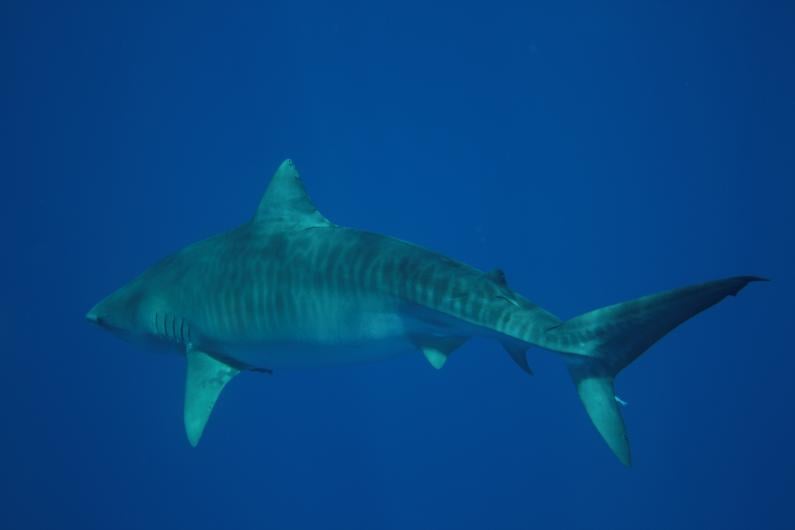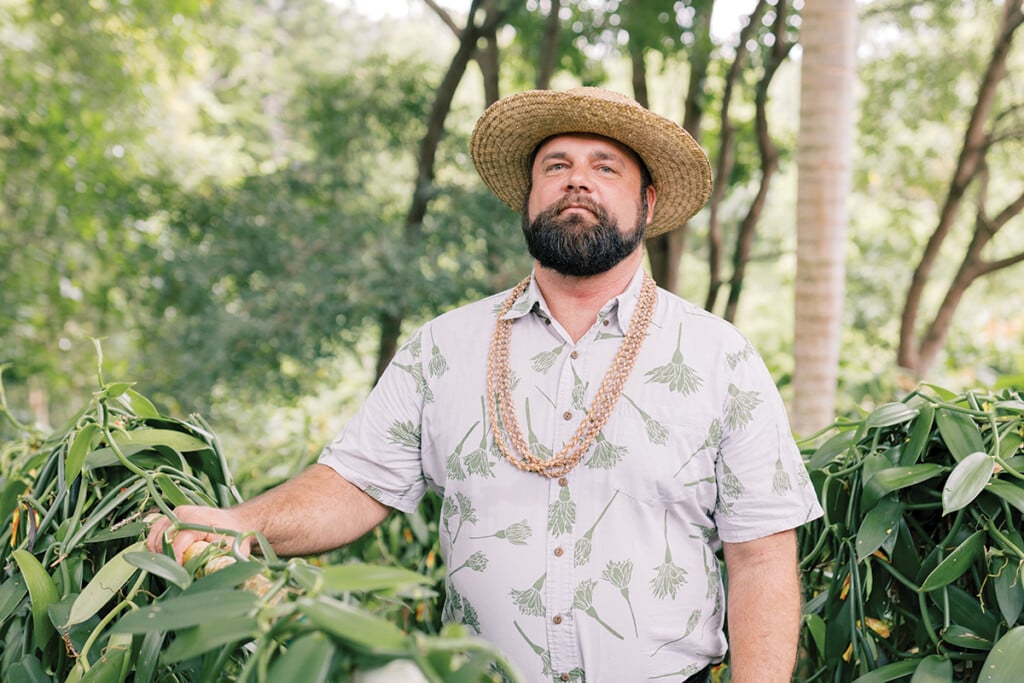The cultural significance of sharks in Hawaii
Hawaiians have long respected the apex predators, but also utilized them as a food source and material resource.

As the captain of the Moo, a 20-foot Radan boat, Haleiwa’s Kaiwi Berry, founder of Island View Hawaii, a pelagic tour company, regularly takes visitors out to have close encounters with mano (sharks). “The most-feared part—that I always tell people on the boat—is the ‘unknown factor’ because once they actually get in the water with us, [they] know that we can keep them safe and just watch the sharks do their thing,” explains Berry. “The sharks are not there to come and eat us.”

Photo: Brook Dombroski.
According to Berry, Hawaiians have long respected sharks for the apex predators they are, but also utilized them as a food source and material resource. For example, shark’s skin was used to make the head of pahu pai drums, used in music and cultural ceremonies. The pointed parts of traditional weapons, such as the lei o mano (club), were made from shark teeth. No part of the shark went to waste.
Culturally, sharks have also been held in high reverence by generations of Hawaiians as aumakua (family guardians)—ancestors reincarnated as animals and sent to protect family members. But not all sharks are considered aumakua. For Berry and most Hawaiians, there is one particular species of shark that is considered a guardian.
“Some of my family members believe our aumakua is a tiger shark, and not all sharks are aumakua either. I would read stories about a shark helping people catch fish, and they would lead them on this path,” says Berry. “For me during the tours when a tiger shark does roll up it’s something of significance to me and my crew because it’s something my grandfather showed me when I was young and taught me how to have a relationship with.”

In addition to the shark encounters, Berry also likes to talk about the cultural significance of sharks to visitors to foster a respect for the ocean and its creatures.
“I’m just trying to teach [visitors] a little history so that they can share that respect for the island and its animals,” he explains. “I want to show them the beauty of the ocean’s animals so when they go on land [after the tour] they maybe think twice about letting their trash go in the water, standing on the reef or grabbing a turtle.”


